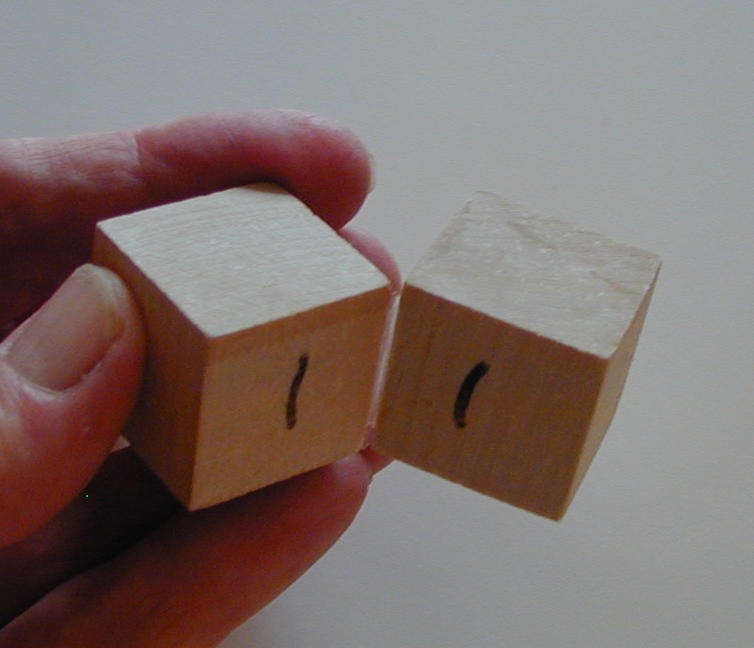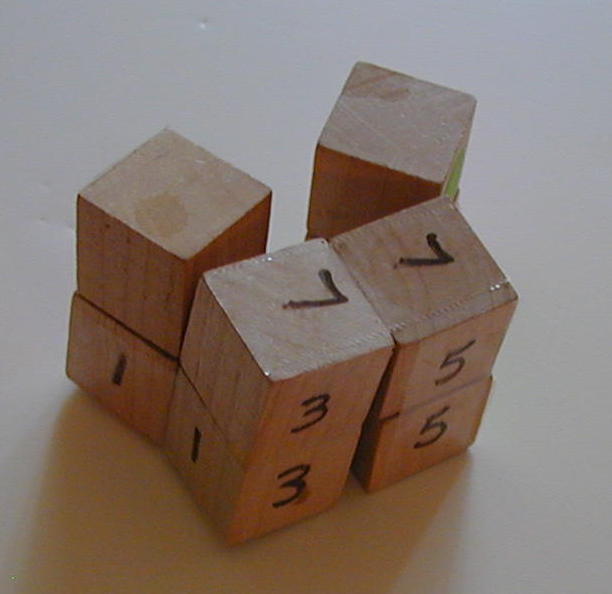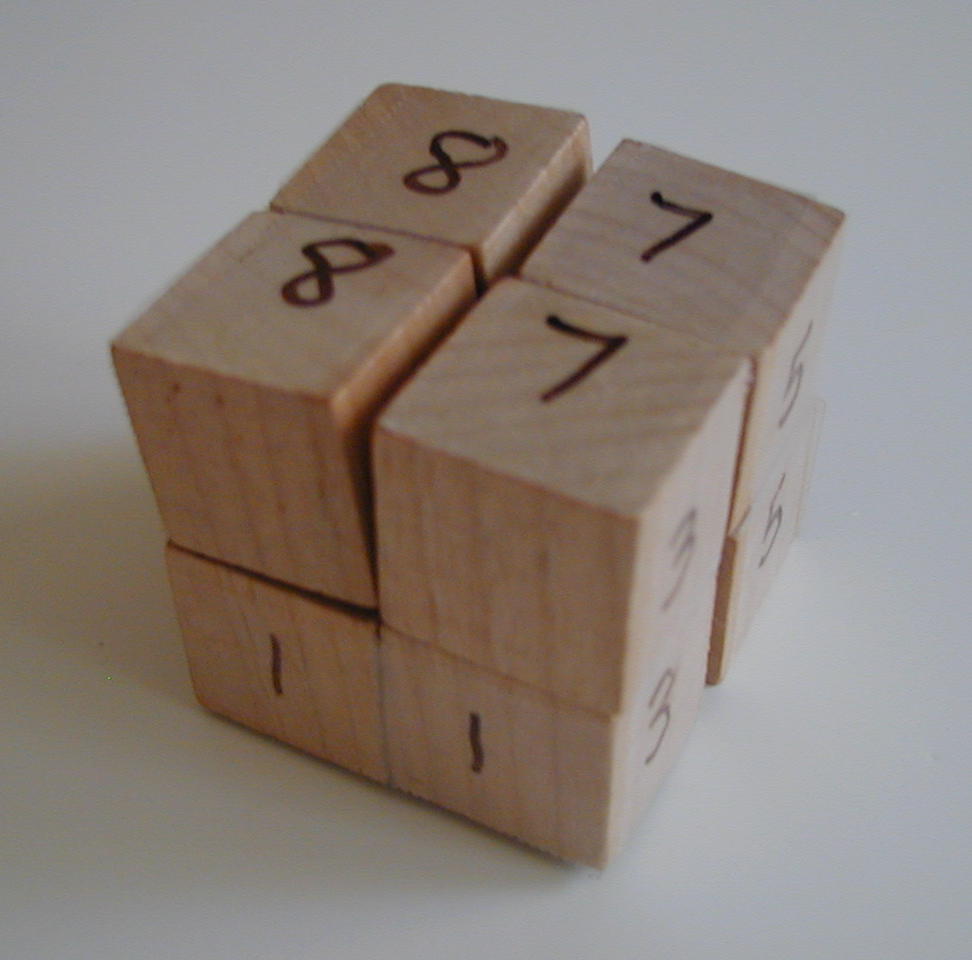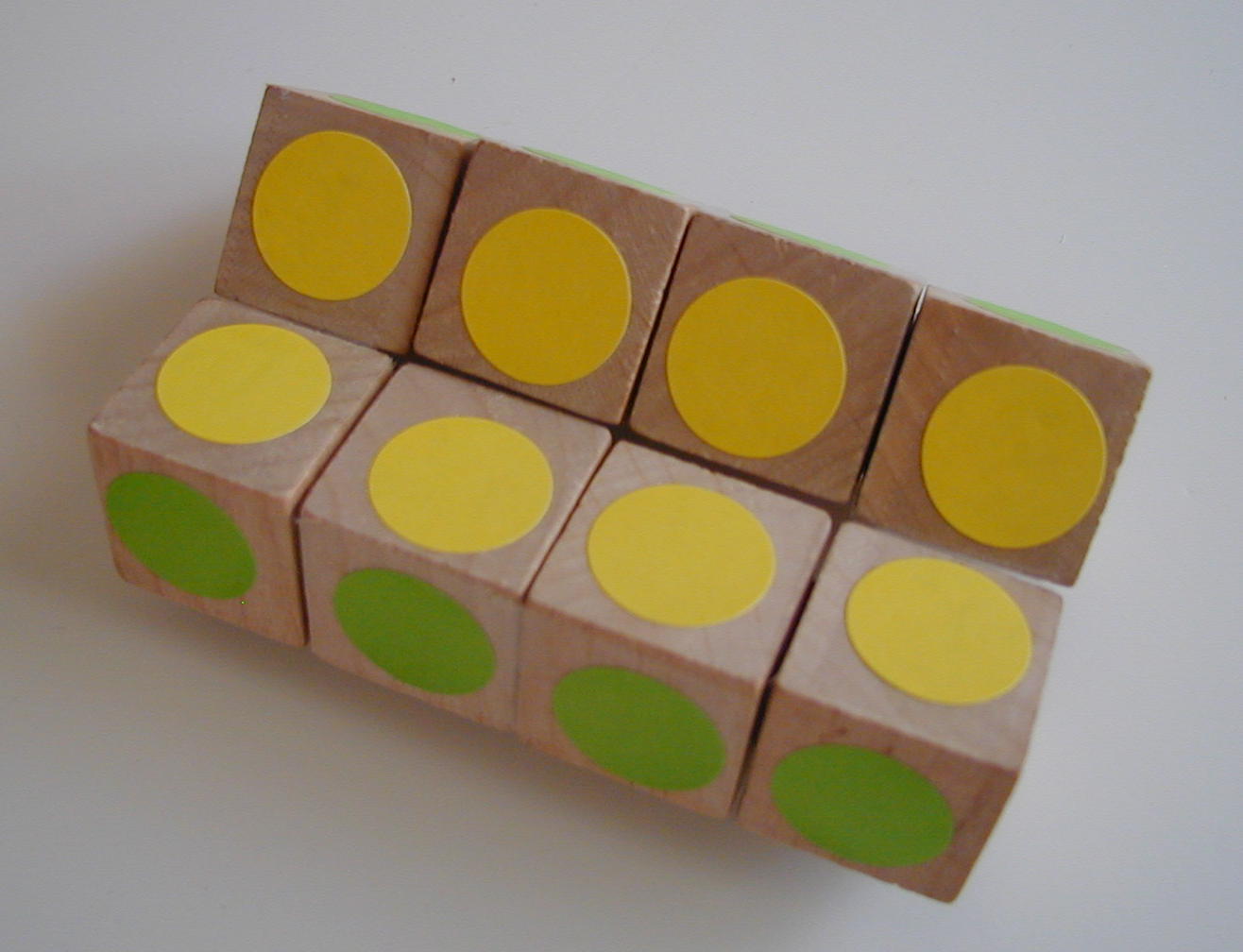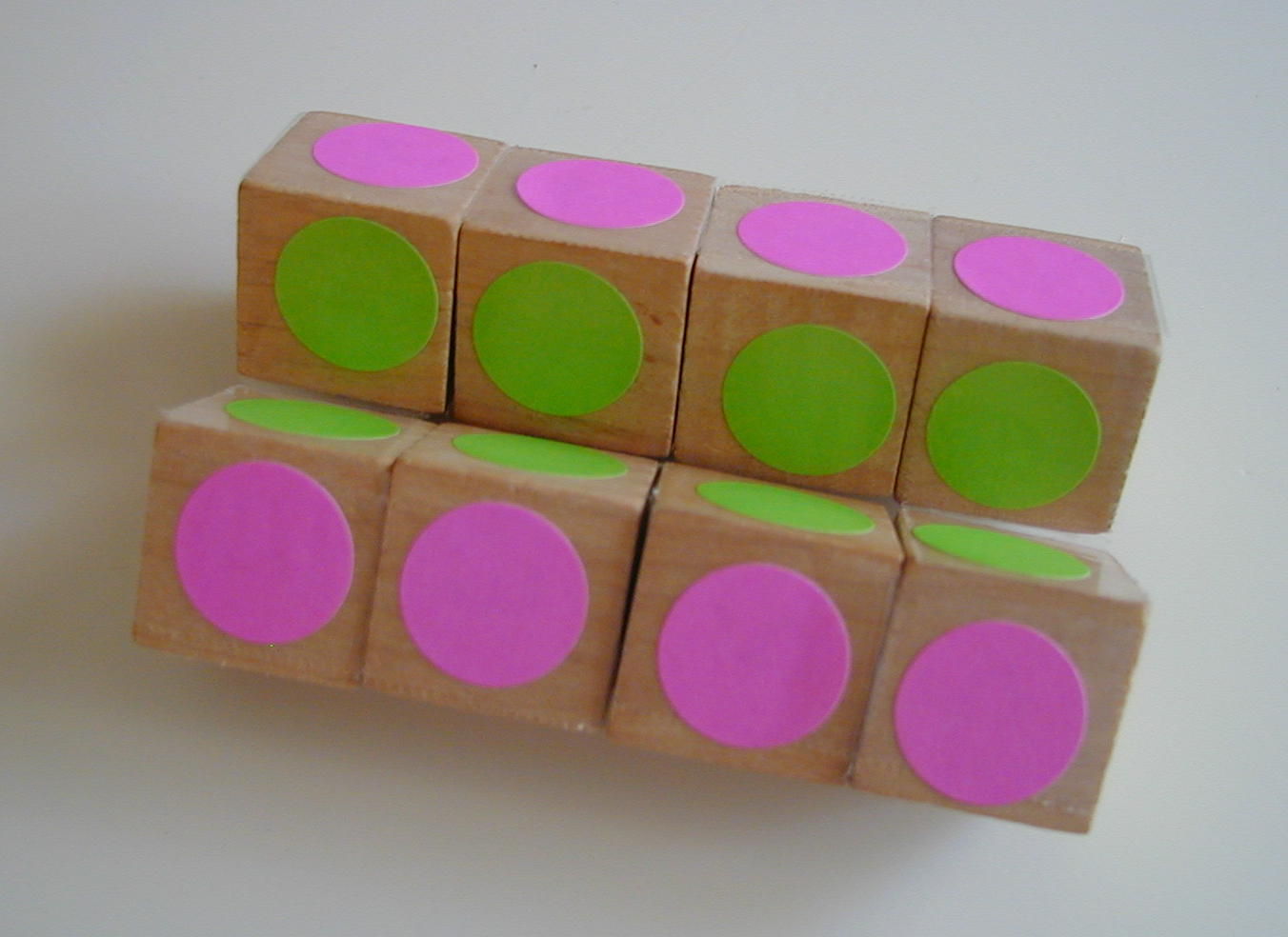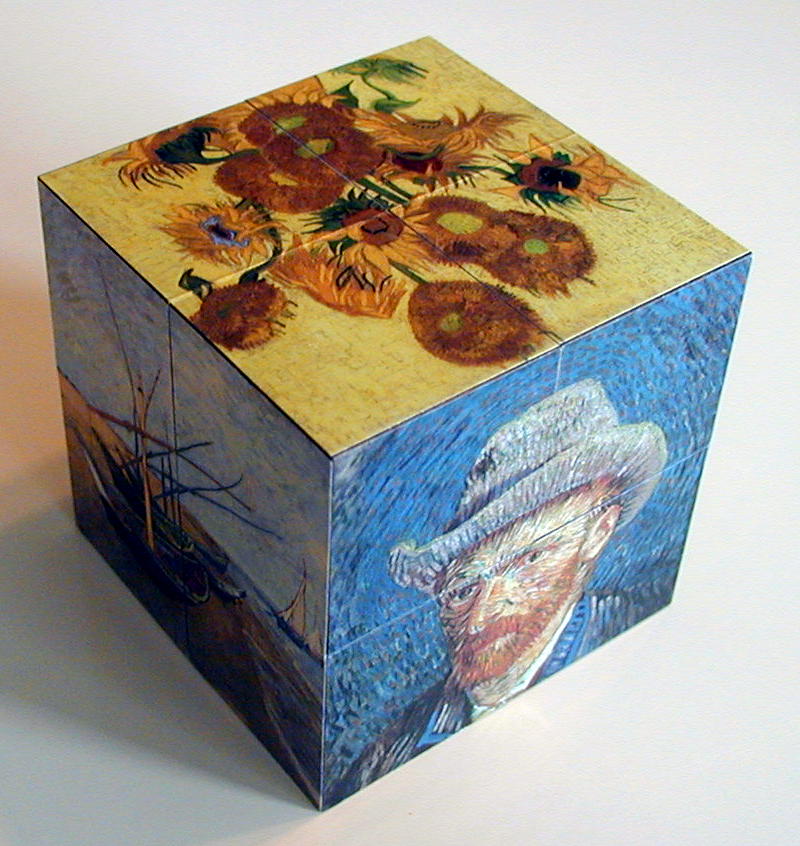

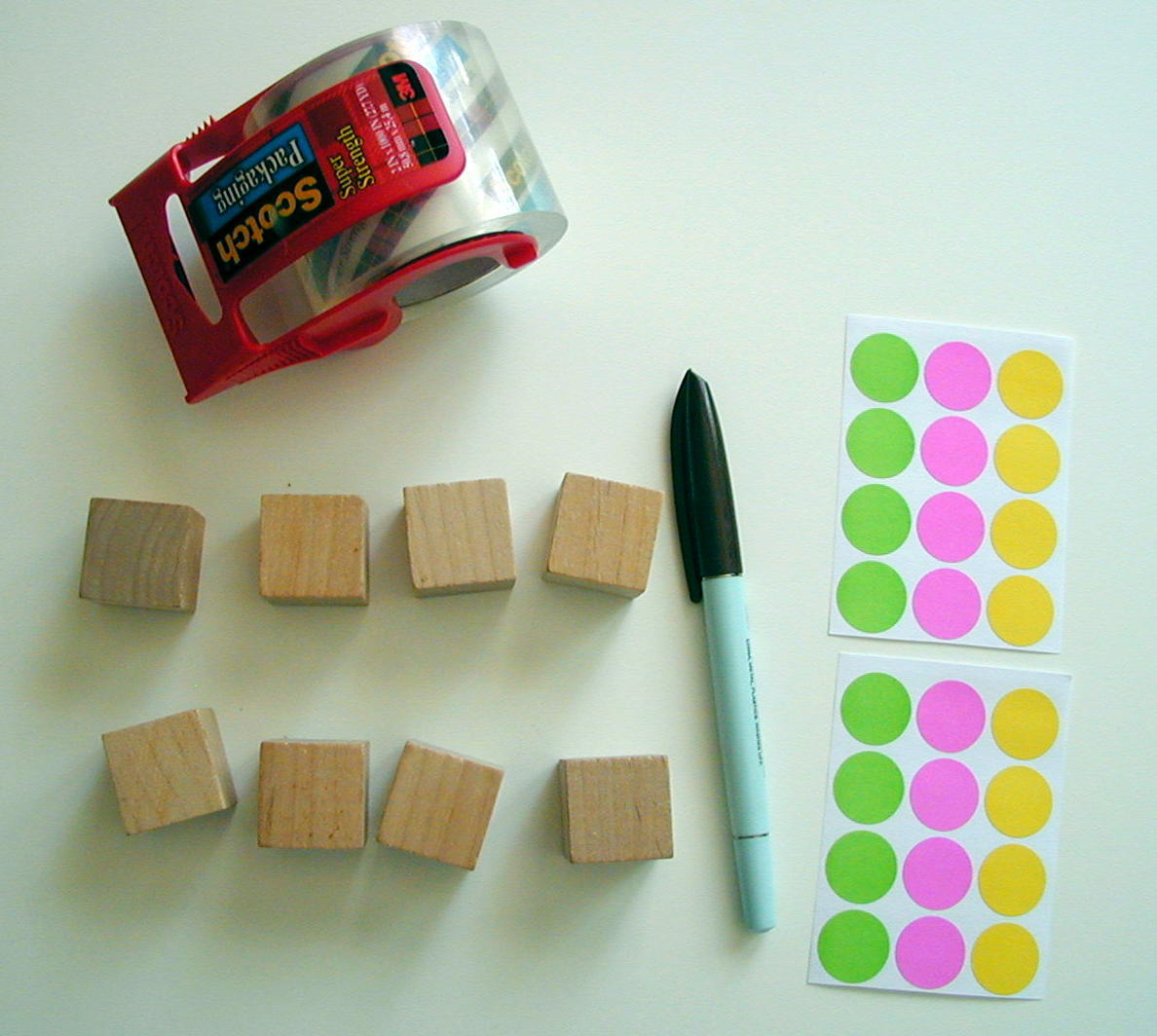

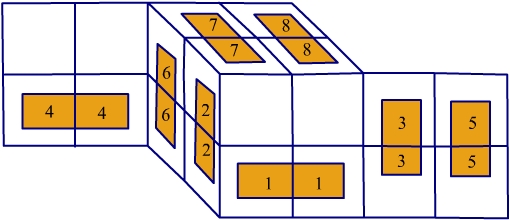
|
Before building the folding cube, first study the positions of the eight hinges. You join eight equal cubes (cubic inch blocks) with eight pieces of packaging tape (shown here in orange), exactly as shown in the diagram. Do you see that there will be eight hinges? |
